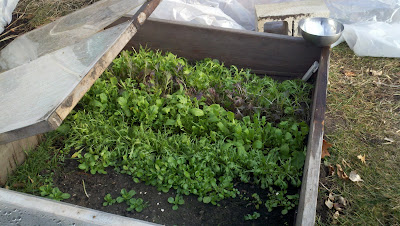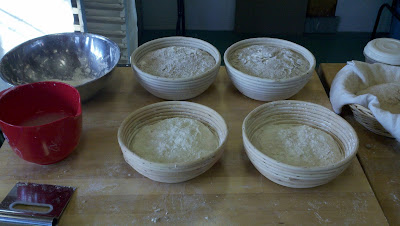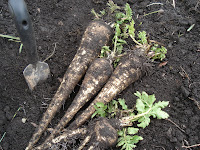At the end of every garden season I like to look back and figure out what went right and what went wrong. Here are some areas that stood out last season.
Pests. Or rather lack of them. There was considerably less damage to our crops than in previous years. Even with all the rain, the slugs were few and far between. Here are some of the things that may have helped keep down the insect damage:
- Using row covers on new seedlings. I used Agribon row covers on most of the transplanted seedlings. This protected the seedlings until they were big enough to withstand any insect attacks. It worked especially well protecting the cabbage seedlings as well as the arugula and spinach, which flea beetles used to feed on, filling the leaves with tiny pinholes.
- Using insect repellent plants. I raised marigolds from seed and planted them all around the garden. Marigolds are known as one of the best all-around insect repellents. Peppermint is another good repellent, and I used it in a couple of beds. Peppermint tends to spread prolifically, so you need to keep an eye on it. Garlic is another plant that insects dislike, so instead of having one bed of garlic, I split the planting into two separate beds. This fall I divided it even more, so I will have garlic in three different areas of the garden next spring.
We've also had problems in the past with voles eating the potatoes, but the last couple of years the damage has been almost nil. I used to mulch the potatoes with marsh hay, but the voles would nest in the hay and make it hard for our cat Kazel to find them. Now I don't use the hay and instead use a hoe to draw the soil up around the potato plants in hills. So this was the last sight several voles saw last summer:
Another strong area last season was the prolific yield of some of the vegetables. Our one cucumber plant produced over 60 fruit, and below was the yield from one winter squash plant.
My theory about this the fact that we planted borage flowers around the garden, which are known to attract honeybees. Along with the large amount of flowers in the front yard, the bees may have been drawn to the garden where they pollinated a large number of the blossoms on the vegetables. In any case, there will be plenty of borage in the garden again next year.
There weren't any big failures this year, the main problem was my delay in starting some seedlings, like bell pepper, kale and fall cabbage, which resulted in few red peppers, and scrawny kale and fall cabbage. I'm also trying to find a better system of supporting the tomatoes, so that the yield is high without having so many rot on the ground under the dense foliage.






























